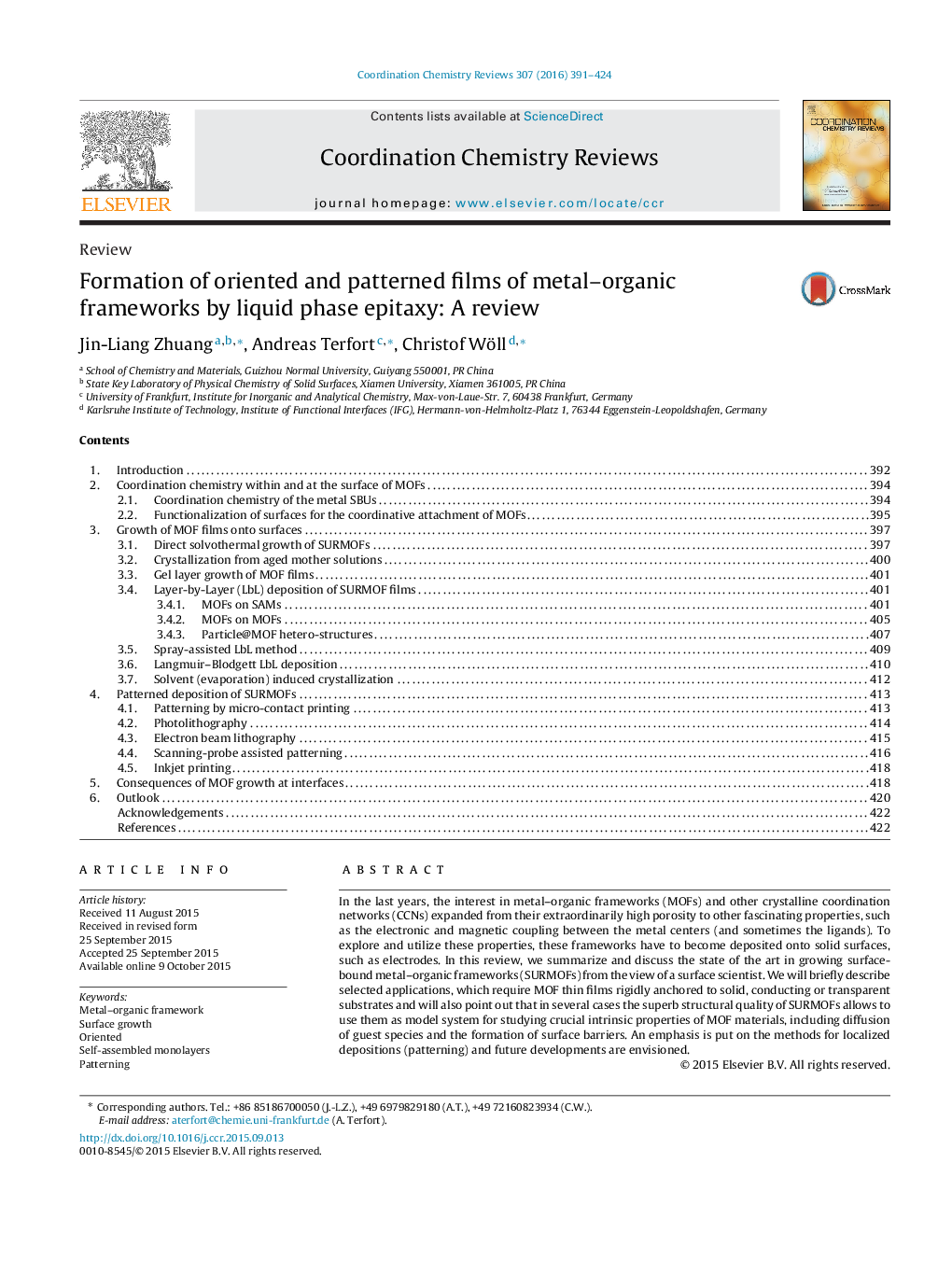| Article ID | Journal | Published Year | Pages | File Type |
|---|---|---|---|---|
| 1299075 | Coordination Chemistry Reviews | 2016 | 34 Pages |
•Metal–organic frameworks (MOFs) are one of the most investigated class of substances.•More and more new properties are found, such as electrical conductivity or sensoric properties.•The epitaxial growth of MOF onto surfaces provides a good means for MOF deposition/contacting.•The deposition also has other implications, such as directionality.•Future applications are suggested/outlined.
In the last years, the interest in metal–organic frameworks (MOFs) and other crystalline coordination networks (CCNs) expanded from their extraordinarily high porosity to other fascinating properties, such as the electronic and magnetic coupling between the metal centers (and sometimes the ligands). To explore and utilize these properties, these frameworks have to become deposited onto solid surfaces, such as electrodes. In this review, we summarize and discuss the state of the art in growing surface-bound metal–organic frameworks (SURMOFs) from the view of a surface scientist. We will briefly describe selected applications, which require MOF thin films rigidly anchored to solid, conducting or transparent substrates and will also point out that in several cases the superb structural quality of SURMOFs allows to use them as model system for studying crucial intrinsic properties of MOF materials, including diffusion of guest species and the formation of surface barriers. An emphasis is put on the methods for localized depositions (patterning) and future developments are envisioned.
